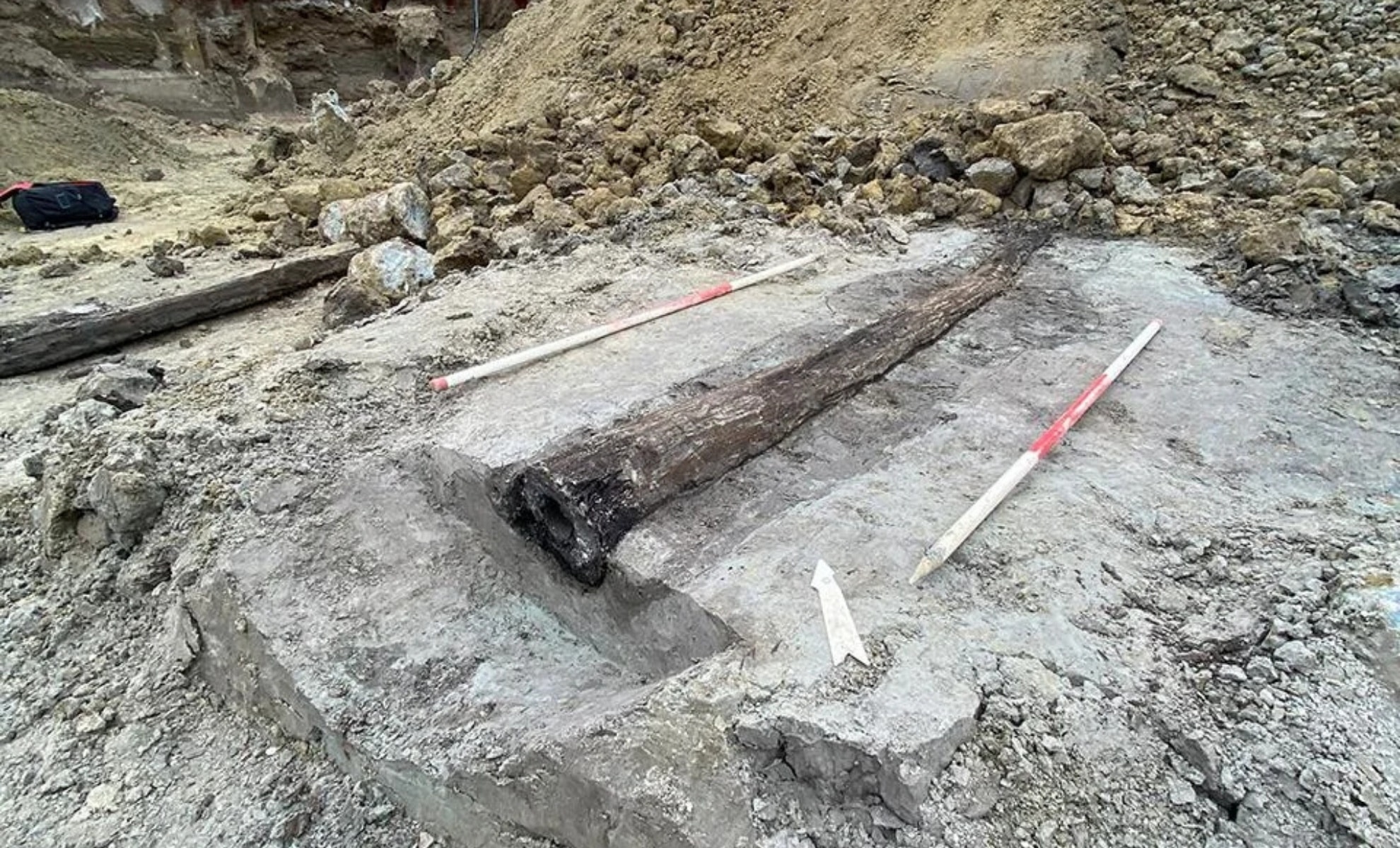A Roman wooden water pipe has been unearthed in the Belgian city of Leuven during excavation works for a student housing project. The pipe, dating from between the 1st and 3rd centuries CE, is described by the local authorities as an “exceptional” find due to its remarkable state of preservation.
The discovery, made 13 feet below street level on Brusselsestraat, consists of hollowed tree trunks measuring roughly six feet each. It is the first complete Roman wooden water pipe to be uncovered in the Flanders region. Leuven, today a prominent academic and cultural center, was once a small Roman-era settlement situated at a crossroads near a military road connected to the Via Belgica, a major route linking Cologne and Boulogne-sur-Mer.
Despite the modest size of the settlement, archaeologists believe this new find indicates a more developed Roman infrastructure in the area than previously assumed. The find occurred as part of routine development works and has since drawn interest from archaeologists and municipal officials.
According to the City of Leuven, the wooden pipe remained intact for nearly two millennia thanks to the marshy, anaerobic soil of the Dyle River valley, which prevented oxygen and microbes from breaking down the timber.
Preservation Thanks to Unique Soil Conditions
The survival of the wooden structure is due to the rare combination of environmental factors at the site. According to the City of Leuven, the marshy ground surrounding the Dyle River created an anaerobic environment that inhibited decay. This has allowed the pipe—constructed from individual tree trunks, each about six feet long—to remain largely intact for close to 2,000 years. Similar pipe systems had been suspected in areas such as Tienen and Tongeren, but until now, only traces had been recovered due to wood decomposition.
This pipe, which stretches between 65 and 100 feet in length, offers a tangible example of Roman-era engineering in regions where wooden infrastructure rarely survives. The complete state of the pipe makes it a unique find for the Flanders region and offers new possibilities for studying Roman hydraulic technology in northern Europe.
Evidence of Advanced Roman Water Systems
In addition to the preservation of the pipe itself, researchers found indications that it may have been part of a more complex system. Archaeologists observed surface evidence of what may have been a Roman pumping installation. This detail suggests a higher level of water management and engineering than previously associated with such a minor Roman settlement.
According to statements reported by Archaeology News Online Magazine, this find challenges earlier assumptions about the infrastructure in Leuven during the imperial period. The possible presence of a pumping mechanism implies that even smaller Roman settlements might have utilized sophisticated water distribution networks.
Future Analysis and Conservation
The wooden pipe has been transported to a conservation laboratory for further study. The next phase includes dendrochronological analysis—tree-ring dating—to determine the precise age of the timber. Following this, the pipe will undergo freeze-drying to ensure long-term preservation.
Officials hope that, once conserved, the pipe can eventually be displayed to the public. As stated by Dirk Vansina, Leuven’s councillor for Public Works, this discovery is further proof that Roman occupation in the region was not incidental but left behind lasting and technically impressive traces.




